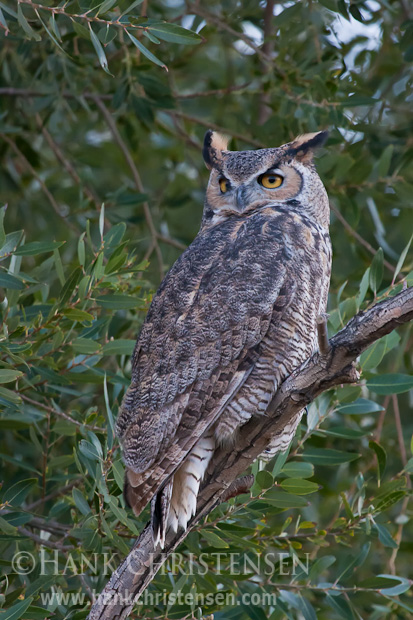
This week’s shot was taken near Bishop, CA in an open field with a nearby stream. Although I was out shooting landscapes, I had my 100-400L mounted on a second body and slung over my shoulder. I was glad I thought to bring this “just in case” setup. You never know when you’ll run into wildlife!
Some friends alerted me to the owl’s presence, and as I got closer, I was presented with two problems, both relating to the lighting conditions. First of all, the sun was setting behind the tree in which the owl was perched. This created a strong silhouette of the tree branch with the owl. Sometimes silhouettes can work well with birds, especially if there is a strong graphical element to the shape of the bird. That wasn’t going to work here, because the shape of the owl was a simple oval – nothing interesting there. Moving closer to the tree and beneath it shielded me from the setting sun and allowing my camera meter to expose properly for the scene.
Now I was presented with the second lighting problem – it was getting dark. I had my landscape tripod with me, but I had ditched it as I started stalking closer to the tree. I knew I wouldn’t have had time to set up my lens on the tripod anyway, so I was stuck hand-holding. I checked my camera-recommended shutter speed (I often shoot in aperture priority), and knew that I couldn’t hand-hold at that speed and keep the image sharp. So I did what any modern digital shooter would do – I cranked up the ISO. I knew I could at least have a chance of recovering the photo from excessive noise. There is no salvaging a blurry photo.
After I had fired off a few shots, the owl decided he would rather have a little more solitude and flew off to another perch. It was very serendipitous to have run into this bird – if I had gone out specifically looking for a great horned owl, I’m sure I never would have found one.
